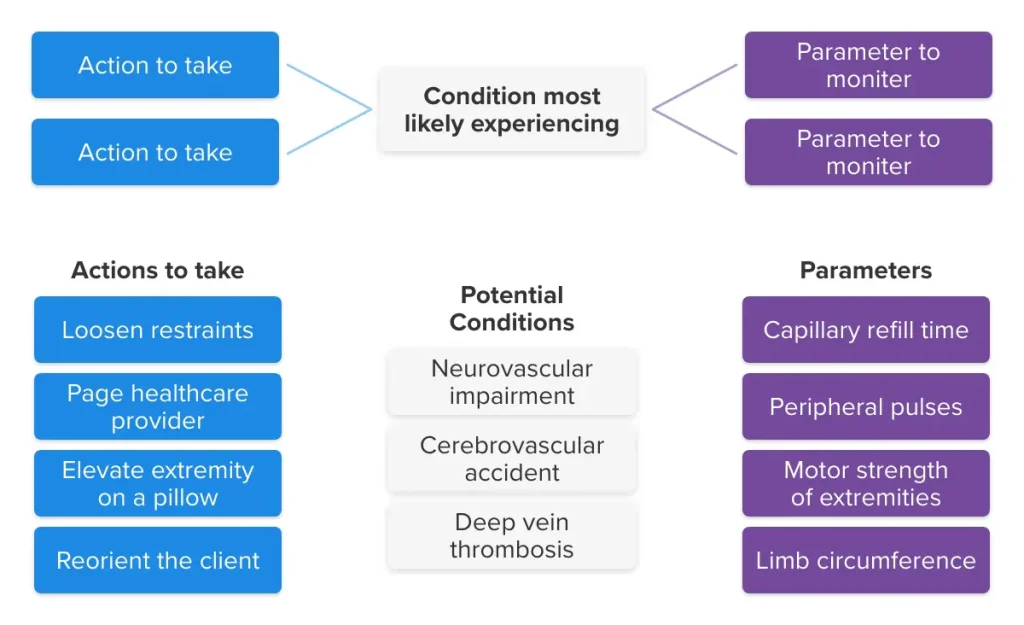Have you ever felt overwhelmed by NCLEX question types, especially the tricky bow tie NCLEX questions? Are you looking for tips to break down and understand them better? If so, you’re in the right place!
I will guide you on how to master these bow-tie questions on the NCLEX exam and boost your confidence. Scroll down my post now!
What Is “Bow Tie NCLEX Questions“?
The NCLEX has various questions to test the nursing student’s ability and knowledge in healthcare scenarios. One of the critical components of this exam is the bow-tie questions.
But what exactly are they? Why are they so important? I will break down these questions to help you understand them and prepare for your exam better. Let’s refer now!
Overview Of Bow Tie NCLEX Questions
Bow tie questions are specific NCLEX questions designed to test nursing students’ critical thinking and decision-making skills.
The name “bow-tie” comes from the unique structure of these questions. Each question is divided into two halves with a central decision point, similar to the shape of a bow tie.
The left side of the bow tie presents a patient’s situation, and the right side presents the potential outcomes. The student’s job is to choose the best action at the decision point to achieve the most favorable outcome.

Importance Of Bow Tie NCLEX Questions In Nursing Education
Bow tie questions play a vital role in nursing education. They help to assess the nursing student’s ability to make quick, informed decisions in high-stakes healthcare situations. These questions require comprehensive knowledge and understanding of nursing concepts and principles.
Moreover, they test the student’s ability to apply this knowledge in real-world nursing scenarios. Therefore, every nursing student must master this question type to ensure they are prepared to provide the best patient care in their professional career.
Different Types Of Bow Tie NCLEX Questions
There are several types of bow tie questions, each designed to test different aspects of nursing knowledge and skills.
Some questions focus on patient assessment, requiring the students to identify the most relevant data to collect from a patient.
Others may focus on planning and implementation, requiring the students to decide the best course of action based on the patient’s condition.
Prioritization questions test the candidate’s ability to determine which patient needs attention first in a multiple-patient scenario.
Each type of bow tie question on the NCLEX brings its unique challenge and learning opportunity for the test-takers.
Resources For Bow Tie NCLEX Questions
A variety of resources are available for practicing bow-tie questions. Numerous books, online platforms, and nursing education apps allow you to practice this question.
Some popular resources include the NCLEX RN Mastery app, Archer, Uworld, and the Saunders Comprehensive Review for the NCLEX-RN Examination.
These resources offer many bow tie questions. So you can practice and prepare for your NCLEX exam.

How To Answer Bow Tie Questions In NCLEX Exam?
If it’s your first time preparing for the NCLEX, you may find it challenging to tackle bow tie questions. If that’s the case, here are strategies to answer this type of question with ease and precision:
1. Read The Bow Tie Question Carefully
One of the most crucial steps in dealing with bow tie questions is to read them thoroughly and understand what they are asking.
Often, these questions may seem complex at first glance, but once you break them down and understand what each part is asking, they become more straightforward.
Take your time. Don’t rush! Ensure you’ve grasped the full scope of the question. This step lays the groundwork for the following strategies.
2. Identify Which Is The Primary Question
The second strategy is to identify the primary question. In a bow tie question, one part of the question is usually more significant than the other part.
I recommend identifying the primary question because it’s what you should focus most of your answer on.
Once you’ve identified the primary question, you can structure your answer around it, ensuring you address it thoroughly before moving on to the secondary question.
3. Determine Keywords
Keywords are words or phrases that indicate what the question is asking you to do. For example, if the bow tie question uses “compare” or “contrast,” you must highlight similarities or differences.
Identifying these keywords can help you understand what your answer should look like and can guide you as you structure your response.
4. Break The Question Into Smaller Parts
Bow tie questions usually involve multiple elements. Instead of answering the question in one go, I suggest breaking it down into smaller, manageable parts.
This approach lets you focus on each part individually and ensures you don’t miss any critical aspects of the question.
Additionally, breaking the question can help you better understand what it’s asking so you can improve the quality of your answer.
5. Double-check Your Answer
After answering a bow tie question, you should double-check your response. This strategy involves revisiting the question and your answer to ensure that you’ve correctly addressed all parts of the question.
Sometimes, you may overlook a critical aspect in the rush to answer. You can correct errors or omissions before submitting your answer by double-checking your response.
6. Practice
Like any other skill, you can improve the ability to answer bow tie questions effectively with practice. Try to find sample bow tie questions and practice answering them.
This strategy will help you familiarize yourself with the question format and develop problem-solving skills.

Common Mistakes When Answering Bow Tie Questions
There are common mistakes that students often make when tackling bow tie questions on the NCLEX, as shown below:
Misunderstand the question
Bow tie questions are often complex, requiring you to prioritize tasks or patient needs. However, some candidates may not determine the primary question, which leads to a wrong answer.
Lack of consideration of all options
Some students rush to select the first option that seems correct without considering all the possibilities. This can lead to incorrect answers, as the first option that appears correct may not be the best answer.
Lack of prioritization
Bow tie questions often ask for the most appropriate or best action to take in a given situation, which requires you to prioritize your options. Some candidates struggle with this concept. They may choose less important actions or fail to identify the most critical ones.
The Bottom Line
Mastering bow tie NCLEX questions is crucial for your success on the exam. These questions test your ability to apply knowledge in clinical scenarios, making them a key exam component.
Keep practicing these questions to improve your test-taking skills and confidence. If you need more tips, contact me for further advice!







